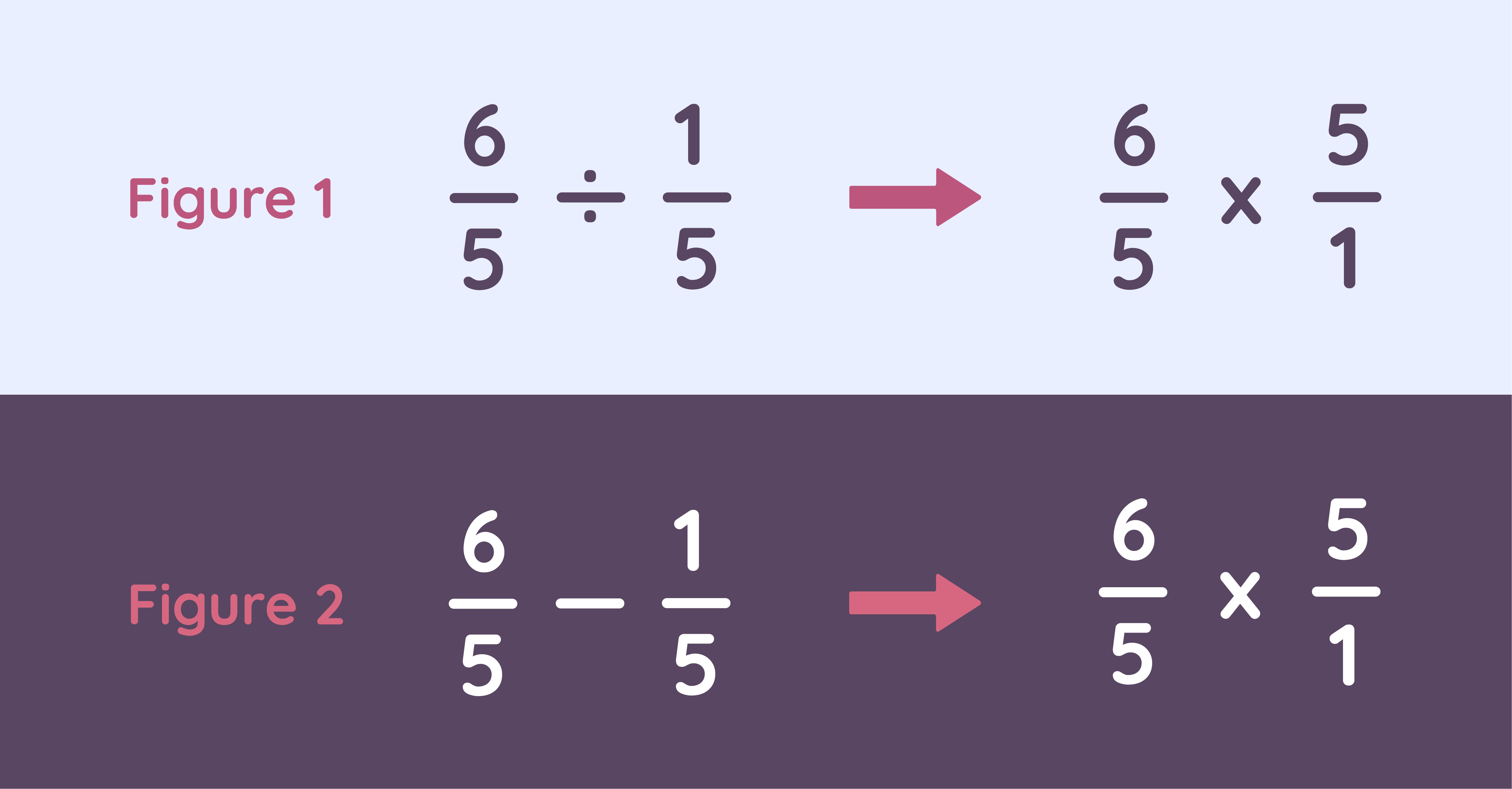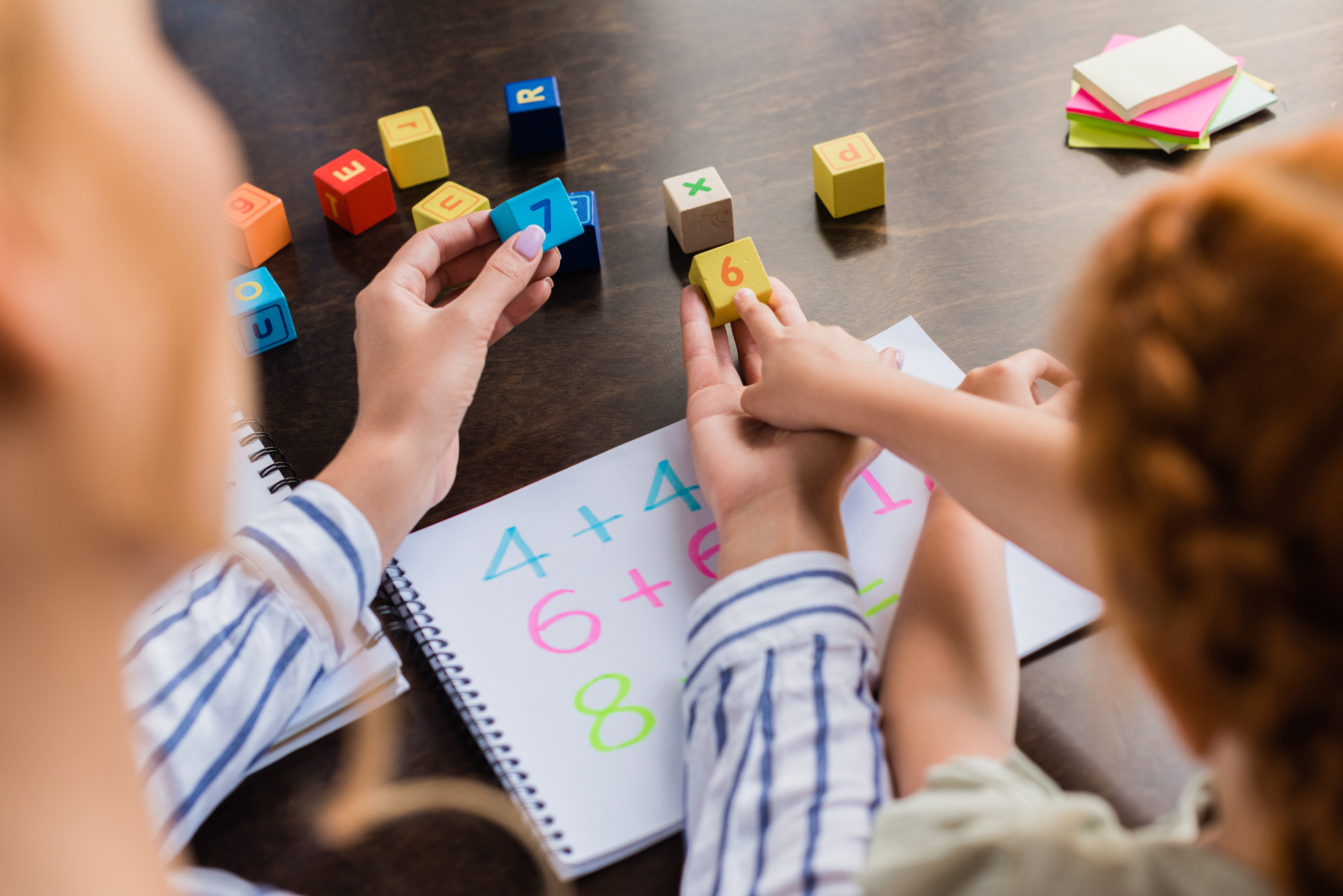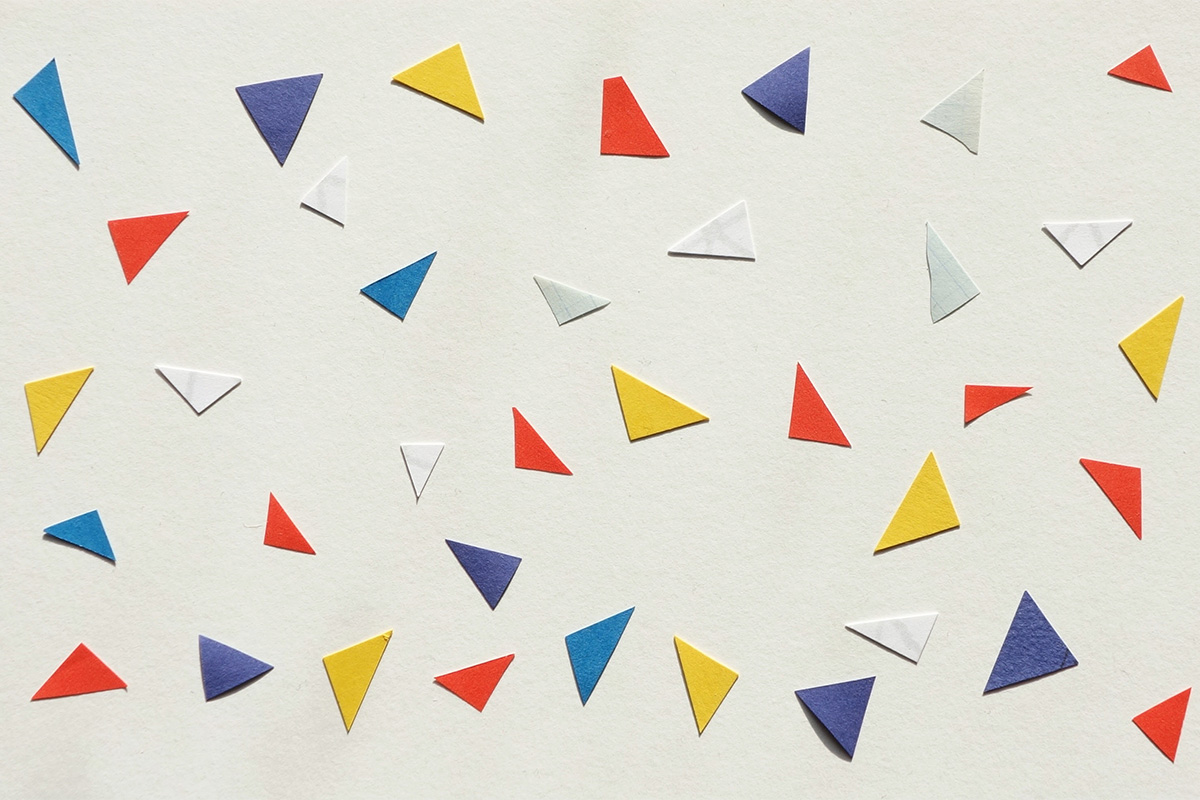Dyscalculia is a learning disability that influences a person’s mathematical ability. According to Andersson and Abdelmalek (2020), children and adults with dyscalculia struggle to understand numbers and encode or transform them into useful information. Also, people with dyscalculia cannot see any logical meaning or coherence between numbers, including right sequences and logical order of smallest to biggest.
Since the struggle is in translating the numbers, the difficulties do not derive from the “number sense” as many studies argue, but in language and understanding/comprehending language. In other words,
dyscalculia is not about numbers in themselves, but about how numbers in terms of symbols are encoded and processed in the brain.
Witzel and Mize (2018) give an example wherein the figure one, the student is taught to invert and multiply. But the student overgeneralized the trick with division to other operations (figure 2).

Dyscalculia example
Challenges related to dyscalculia don’t end in the classroom. Mahmud et al. (2020) found that people with dyscalculia have difficulties remembering phone numbers, postcodes, and even the scores of matches. Everyday operations related to money pose a challenge as well. Giving balance, calculating the amount of money, and estimating expenses become harder. Children with dyscalculia find it difficult to measure distance and determine the time required to move from one location to another. Other than that, it is difficult for them to remember the location, to tell left from right, and to read and state time.

There are different tests and criteria for diagnosing dyscalculia, therefore it’s difficult to assess the percentage of people that are affected by this learning disability. It’s estimated that 5% of the population in the western world struggles with dyscalculia (Kadosh & Walsh, 2007). Since there is still not enough awareness of dyscalculia, the number of undiagnosed people is probably higher.
Below, we will focus on how to help students with dyscalculia.
Although this learning disability affects around 5% of the population, many are still not familiar with dyscalculia. This is especially problematic when we think about teachers and other experts working in education, that are not prepared to help students with dyscalculia. Kunwar & Sharma (2020) studied teachers’ knowledge about dyscalculia. They emphasize the importance of teachers at the basic level because they have a vital role in identifying the dyscalculic students’ difficulties earlier and providing them support for the intensive intervention. Also, teachers’ appraisal and remediation of dyscalculic students have a positive impact on students’ personal capabilities. Despite this, researchers found that a very low number of teachers had a good level of knowledge about dyscalculia. This shows that the majority of students suffering from dyscalculia are not getting help from the teacher due to the lack of teachers’ knowledge about dyscalculic students.
Besides teachers, students’ parents have an equally important role in identifying signs of dyscalculia timely. If not addressed early, it potentially disrupts the emotional development of children as they may find that they do not have mathematical skills similar to their other peers and this can affect their schooling.
Additionally, in the future, dyscalculia can also lead to psychosocial-related risks and economic problems caused by rampant unemployment. Therefore, parents need to play a role by always ensuring their children find a way out of this problem by constantly monitoring their development. Working collaboratively with experts, parents, and teachers can help to produce better outcomes (Mahmud et al., 2020). Now it’s time to explore some ways to help students with dyscalculia.

There is no cure for dyscalculia, but there are learning tools to help people facing this issue and dyscalculia accommodations. As mentioned before, early diagnosis can make sure that children get the proper support from their parents, teachers, and other people involved in the child’s upbringing. There are also initiatives to create programs that would help train children and help them improve their mathematical skills.
Calcularis is a learning software created by a group of computer scientists, educational professionals, and PhD students from the Swiss Federal Institute of Technology Zurich (ETH Zurich) and neuropsychologists at the University of Zurich. This learning tool is capable of adapting to many different learning scenarios while providing individualised support for students.
Calcularis is a computer-based training program for children with dyscalculia, made with the aim of improving number representations and strengthening the link between numbers and spatial processes on the internal mental number line. Results have indicated that this program helped both children with and without dyscalculia, where both of these improved their arithmetical abilities and spatial number representations (Kucian & von Aster M, 2015).
Catch Up Numeracy is an initiative coming from the Education Endowment Foundation in the UK (Rutt et al., 2014). It is designed as an intervention for students who are struggling with numeracy. It consists of two 15-minute sessions per week, delivered by teaching assistants, during the course of 30 weeks. The intervention breaks numeracy down into ten elements, including counting verbally, counting objects, word problems, and estimation. Students were first assessed on each of the components, and the weak spots were then targeted during the sessions.
The programme led to a noticeable improvement in numeracy outcomes. On average, students who received the interventions would make approximately three additional months of progress over the course of the year compared to pupils that did not participate in the sessions.
Both Calcularis and Catch up Numeracy suggest that people with dyscalculia can improve mathematical skills with proper practice and help from experts. Proper care, in combination with early diagnosis, provides significant support for people with dyscalculia.
Our platform enables teachers to customize the content, tests, and assignments for their students. Therefore, dyscalculia accommodations can be easily implemented.
Students can have an individualised learning experience, where they can go at their own pace and repeat the exercises as many times as they would like, getting an infinite number of examples for each of the exercises.
When setting up a new test, a teacher can give additional time for students with learning disabilities (like dyslexia and dyscalculia). Visit our article to learn how to do this.
We also offer a possibility for teachers to create their own content on the platform. This could be useful for teachers who have been educated on dyscalculia to create exercises that will take into account the needs of students with this learning disability.
If you want to know more about dyscalculia accommodations, we recommend this website, these interventions, and these strategies to learn how to make your class even more inclusive. Good luck supporting your dyscalculic students!
Do you have feedback for us on how we can improve and help students with dyscalculia? Reach out to us at: support@sowiso.com

Personalized learning in mathematics: How can we help students own their learning journey?

Having a growth mindset in math is essential for students to flourish in this subject. Here we explore research about this mindset to promote it in your class.

If you teach math, you might have seen your students suffering from math anxiety. Learn more about this problem and how to handle it in your class.